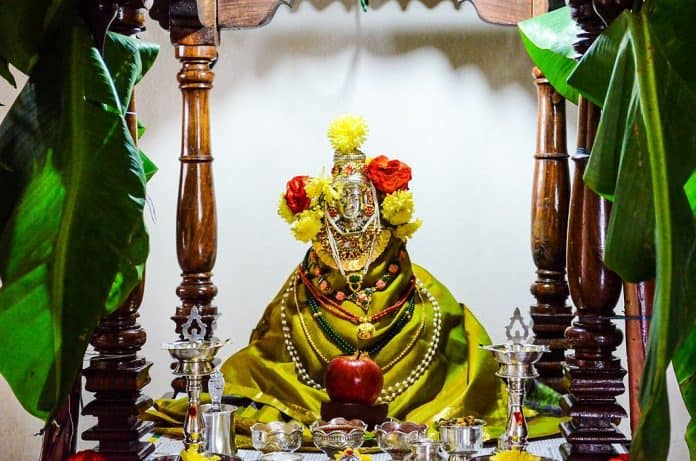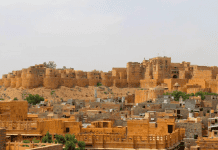Varalakshmi is the Goddess Lakshmi who grants boons. On a Friday of the Shravana month, women across many southern states of the country prepare to perform the Varalakshmi Vrata or a special puja that is held to worship Goddess Varalakshmi. Believed to be equivalent to worshipping the Ashta Lakshmi or the eight forms of Lakshmi, this puja is carried out with reverence to seek the boon of well-being and abundance for the entire family.
As the legend goes, a devout woman named Charumathi was an ardent worshipper of Goddess Lakshmi. Touched by her devotion, Goddess Lakshmi appeared in her dream and instructed her to worship Varalakshmi, the Goddess who grants boons. Following her words, Charumathi prepared to perform the vratam (fasting) and was joined by the women in her family and the rest of the village. Thus, the Varalakshmi Vrat became a tradition among the southern states and is performed with much reference and devotion even today.
A kalash – a small pitcher – is used as the symbol of Varalakshmi. Some women add an idol of Varalakshmi, often made of silver. Adorned with flowers and jewelry, the Varalakshmi is prepared for the puja. The goddess is worshipped with flowers, fruits, and special food items. A number of offerings are made to the goddess. A sacred thread holding a leaf from the puja and colored with turmeric is tied on the wrist of the women who have performed the puja as a mark of Goddess’ protection.
Women visit each other on this day and seek blessings from the Goddess Varalakshmi presiding in the house. They offer vermillion and turmeric to each other on the occasion as a sign of prosperity and piety (in a haldi kumkum ceremony). While the social distance continues this year, women are staying true to their tradition and performing the Vrata. Families are making virtual visits to each others’ Goddess Varalakshmi to seek blessings and follow safe practices.


















